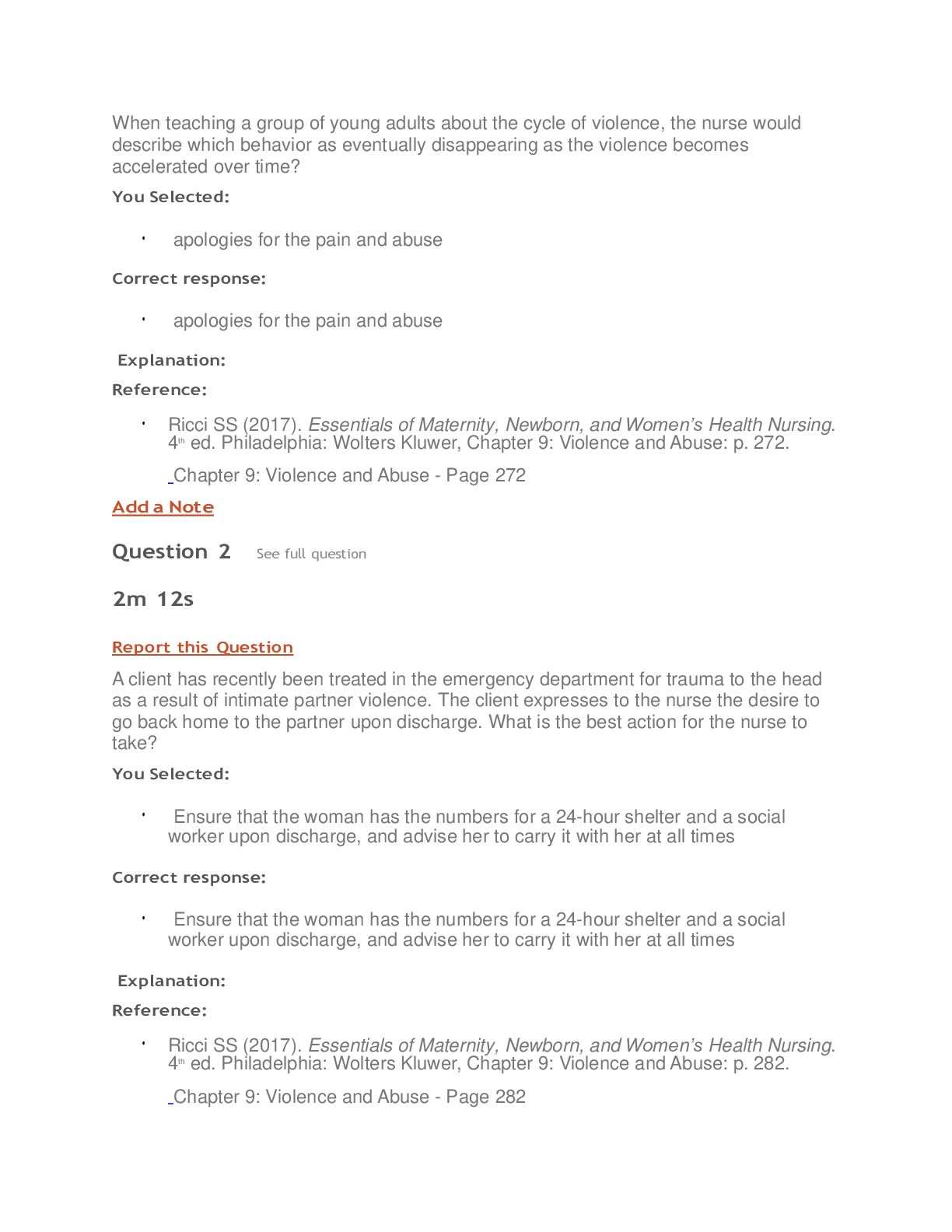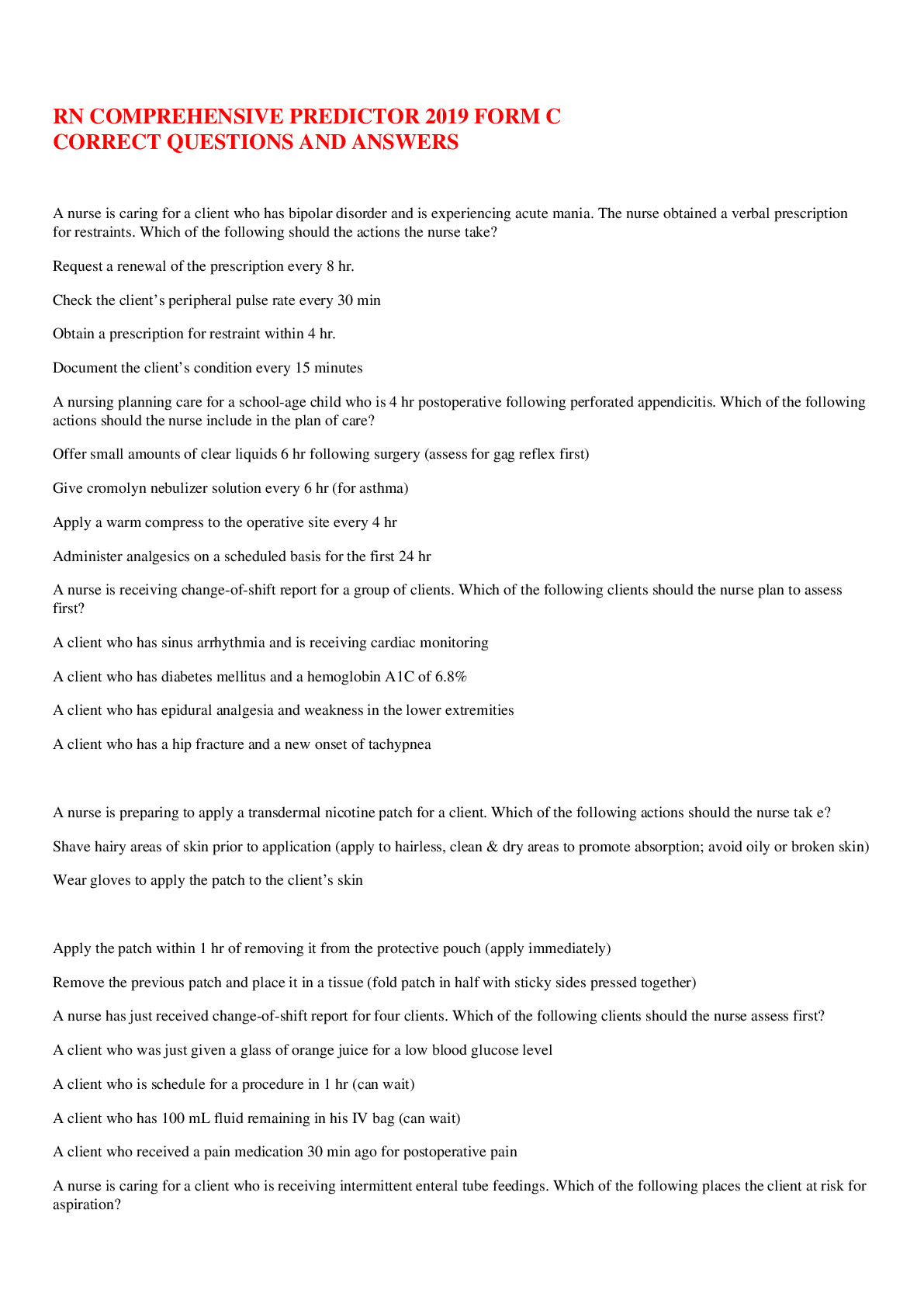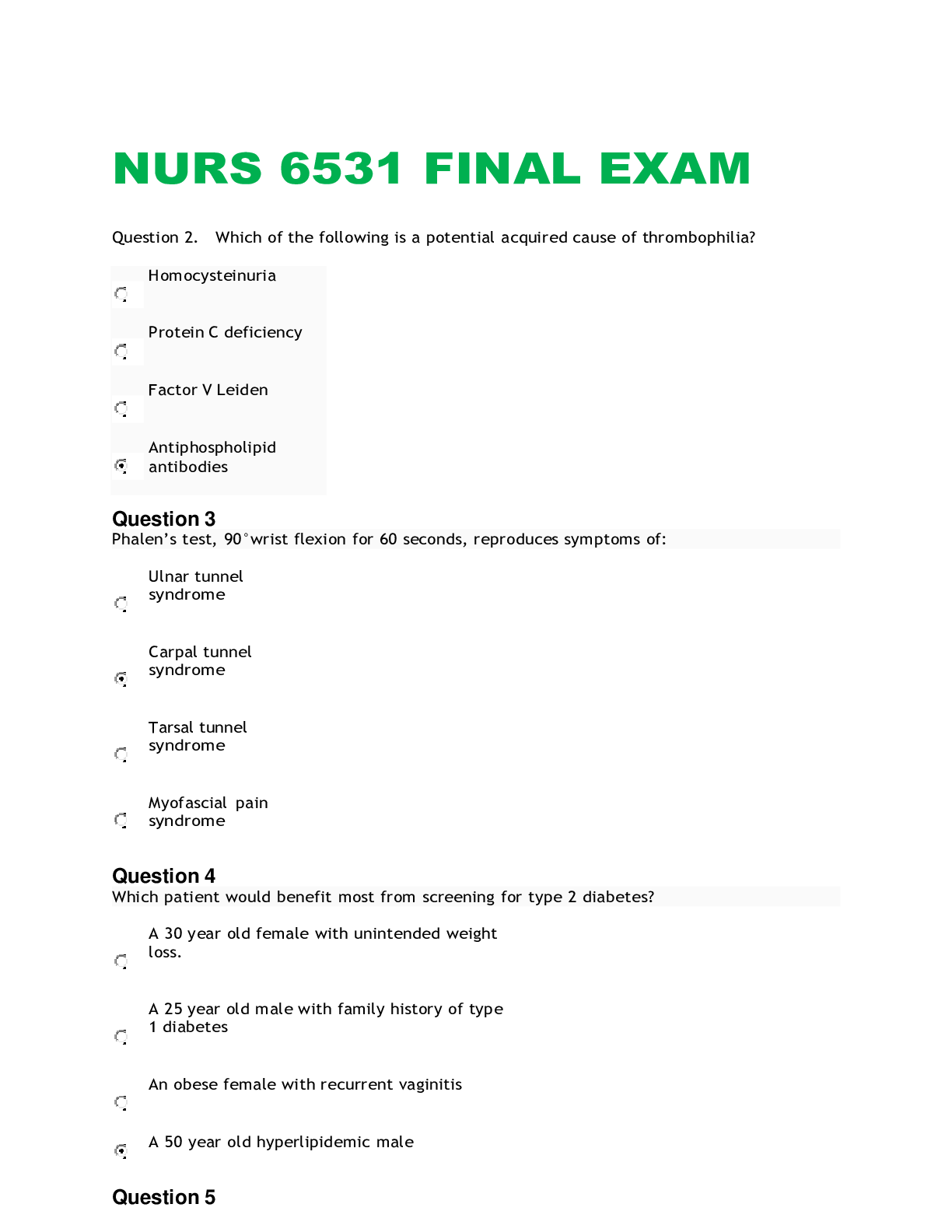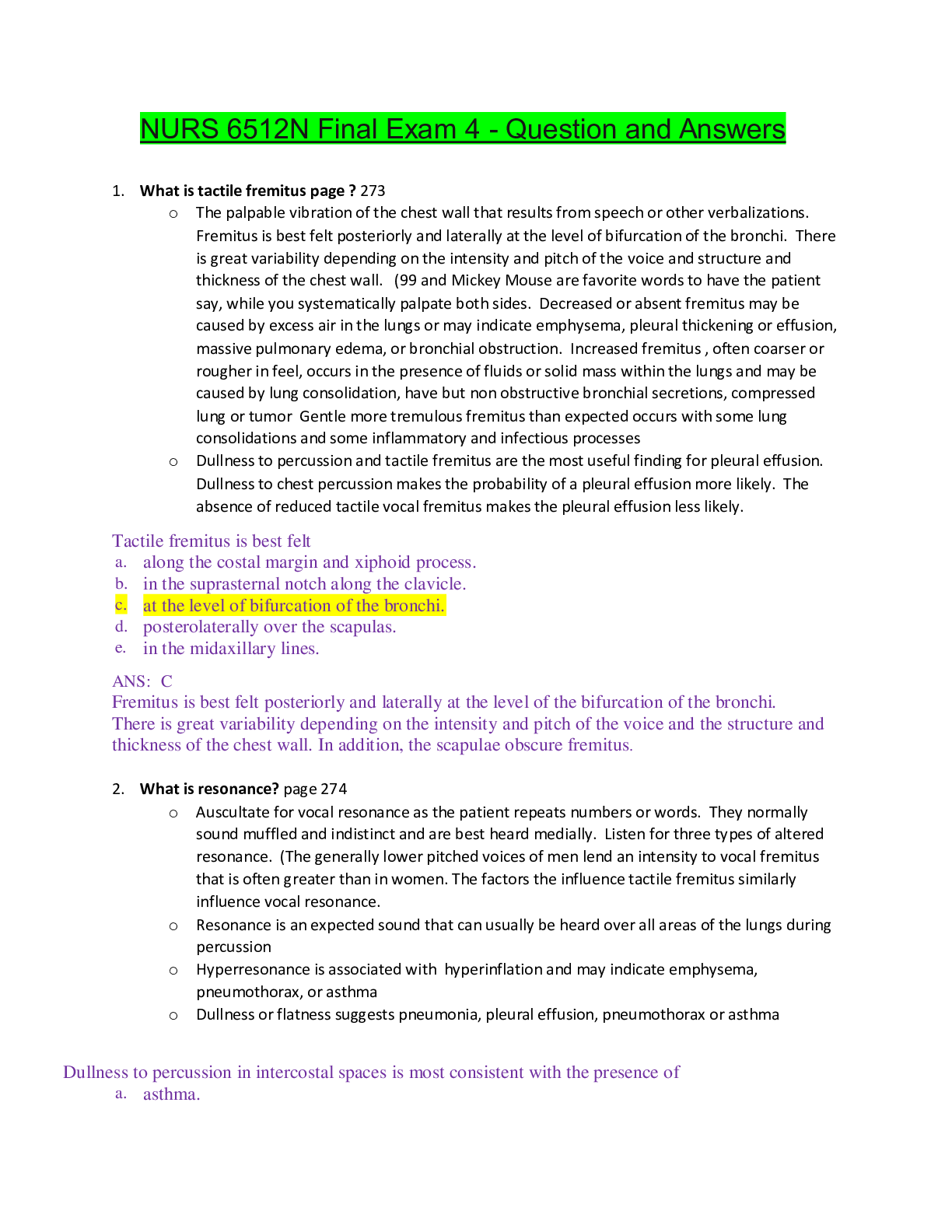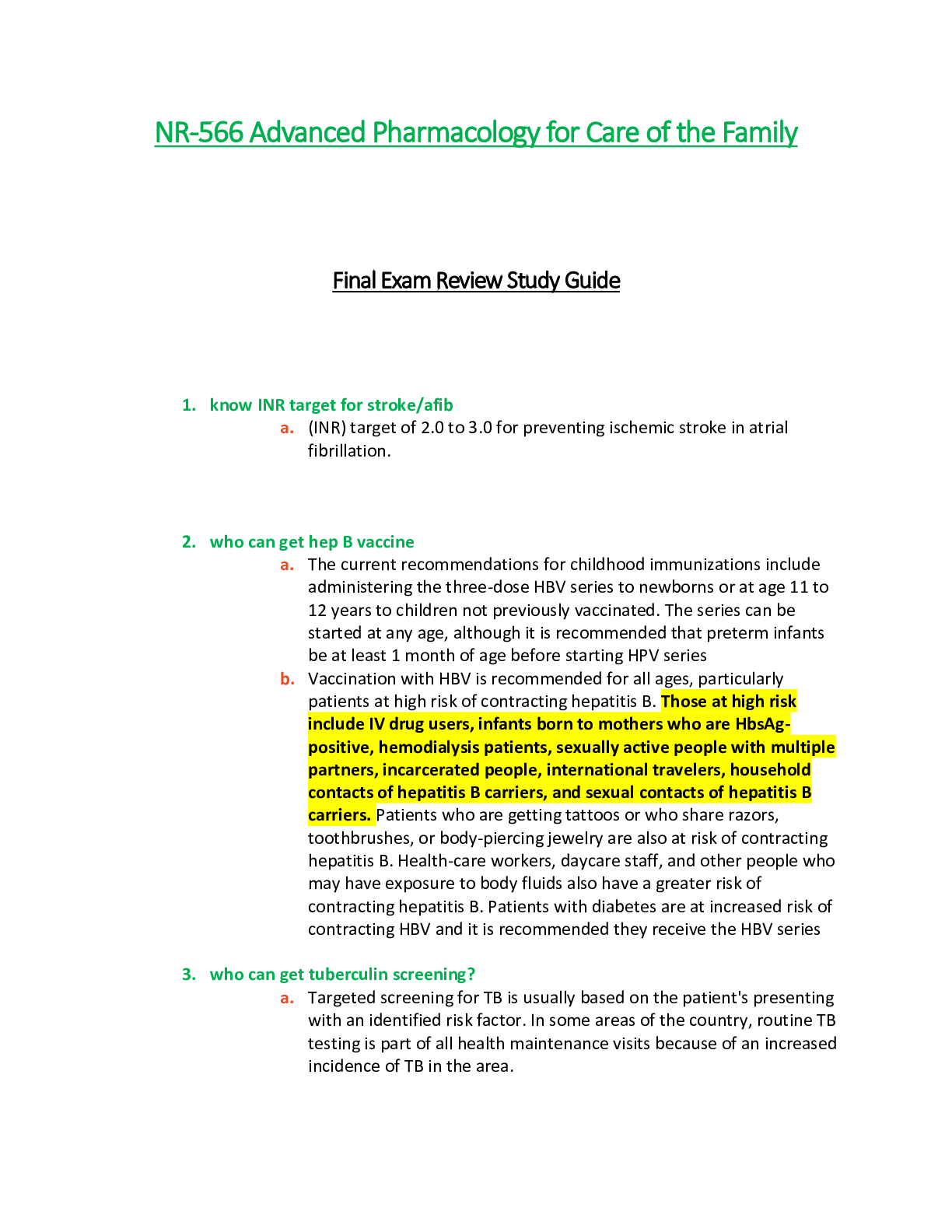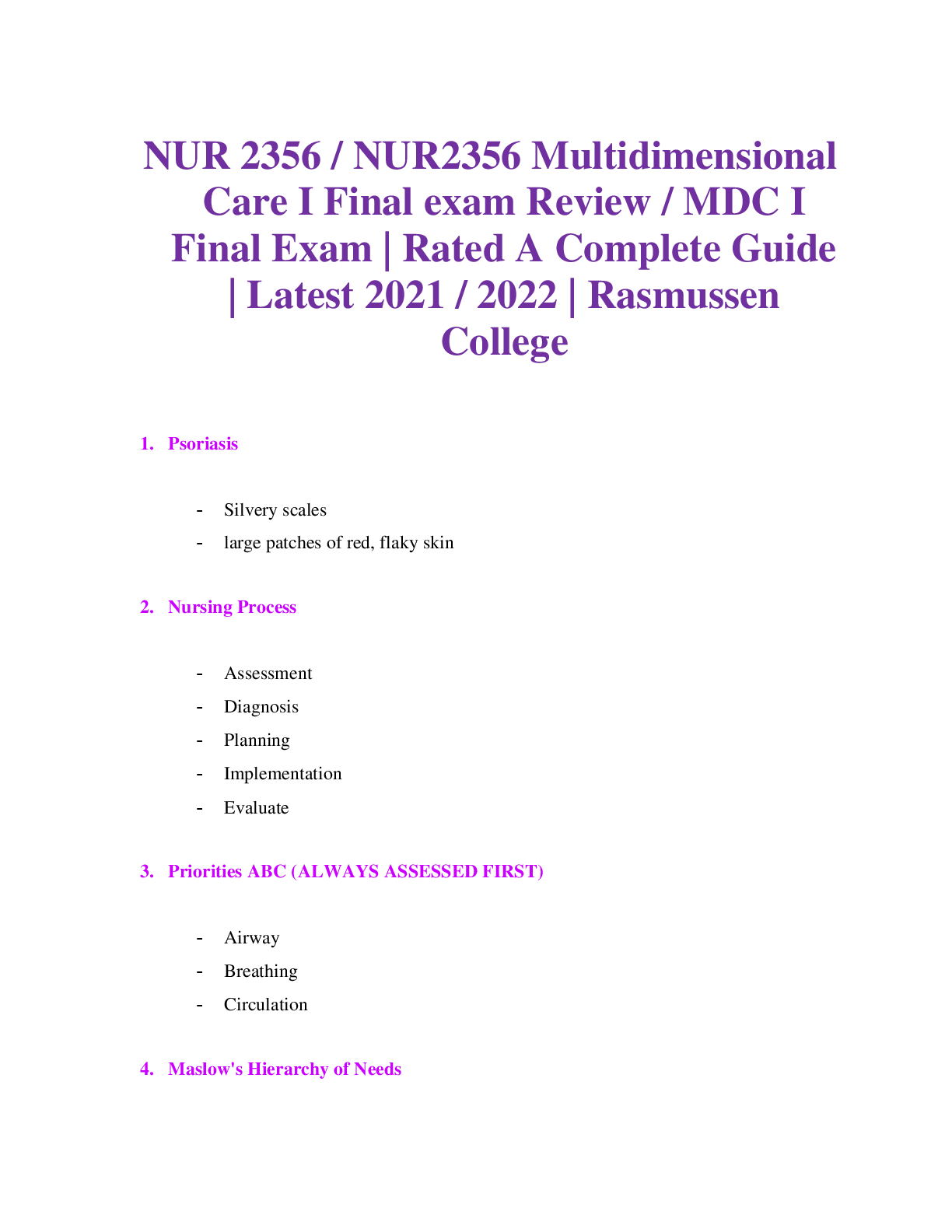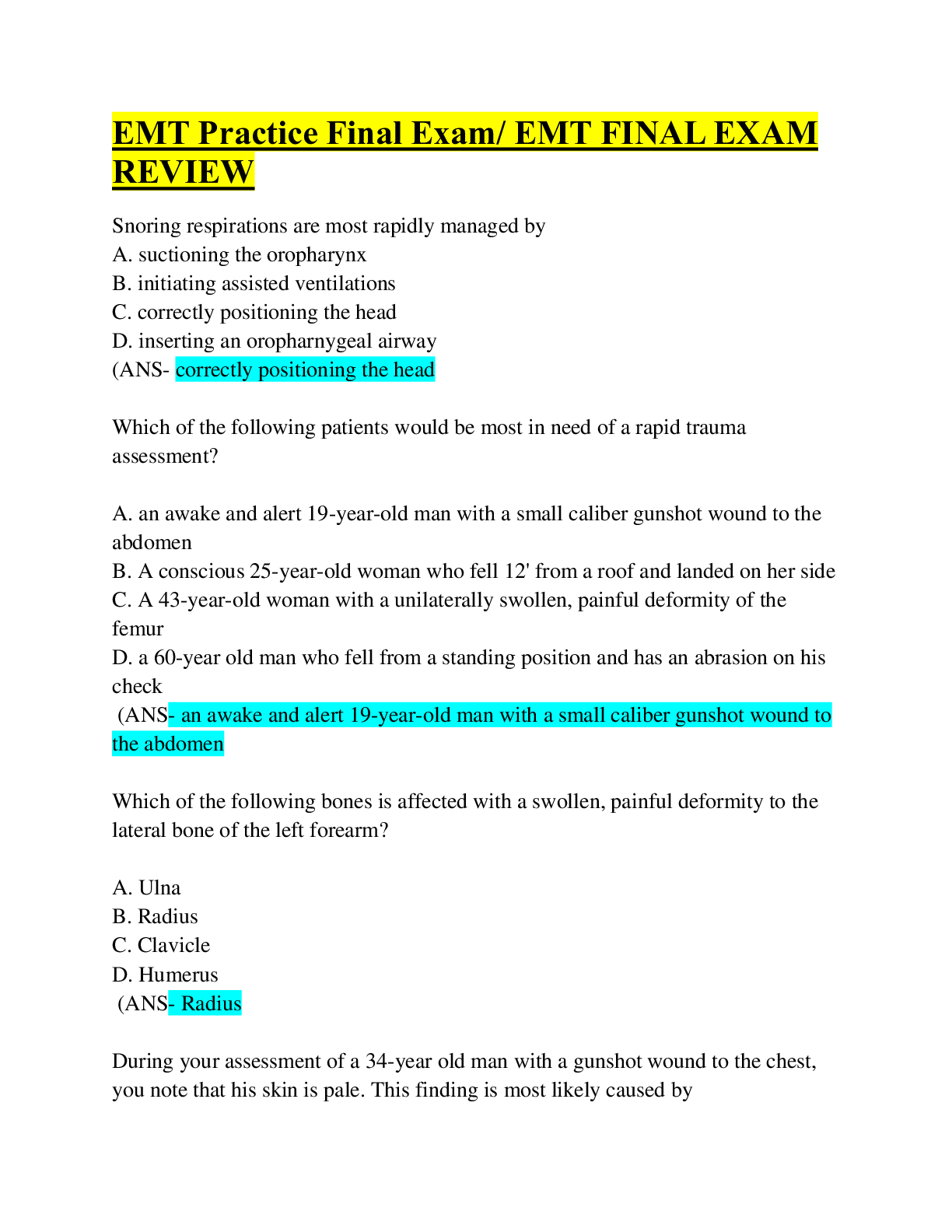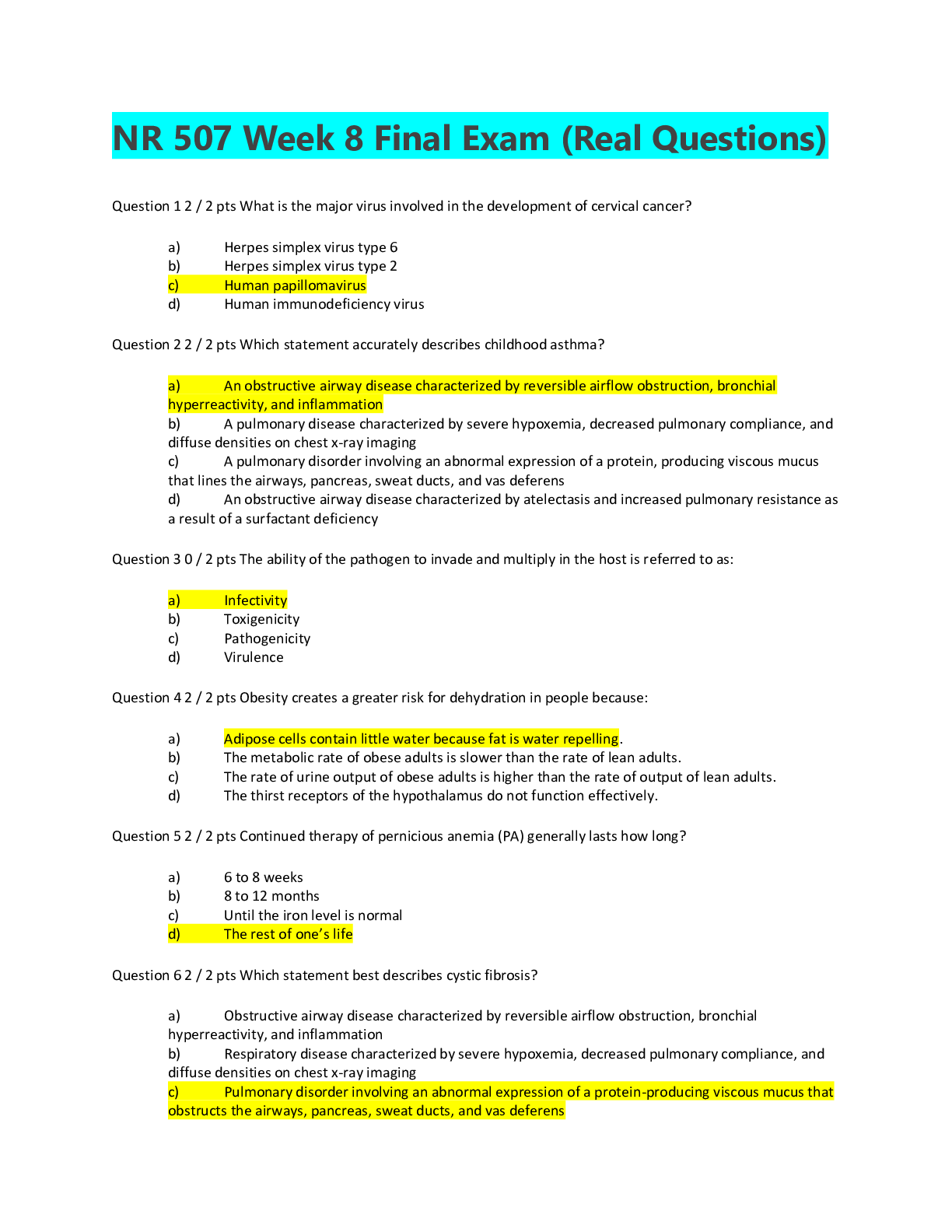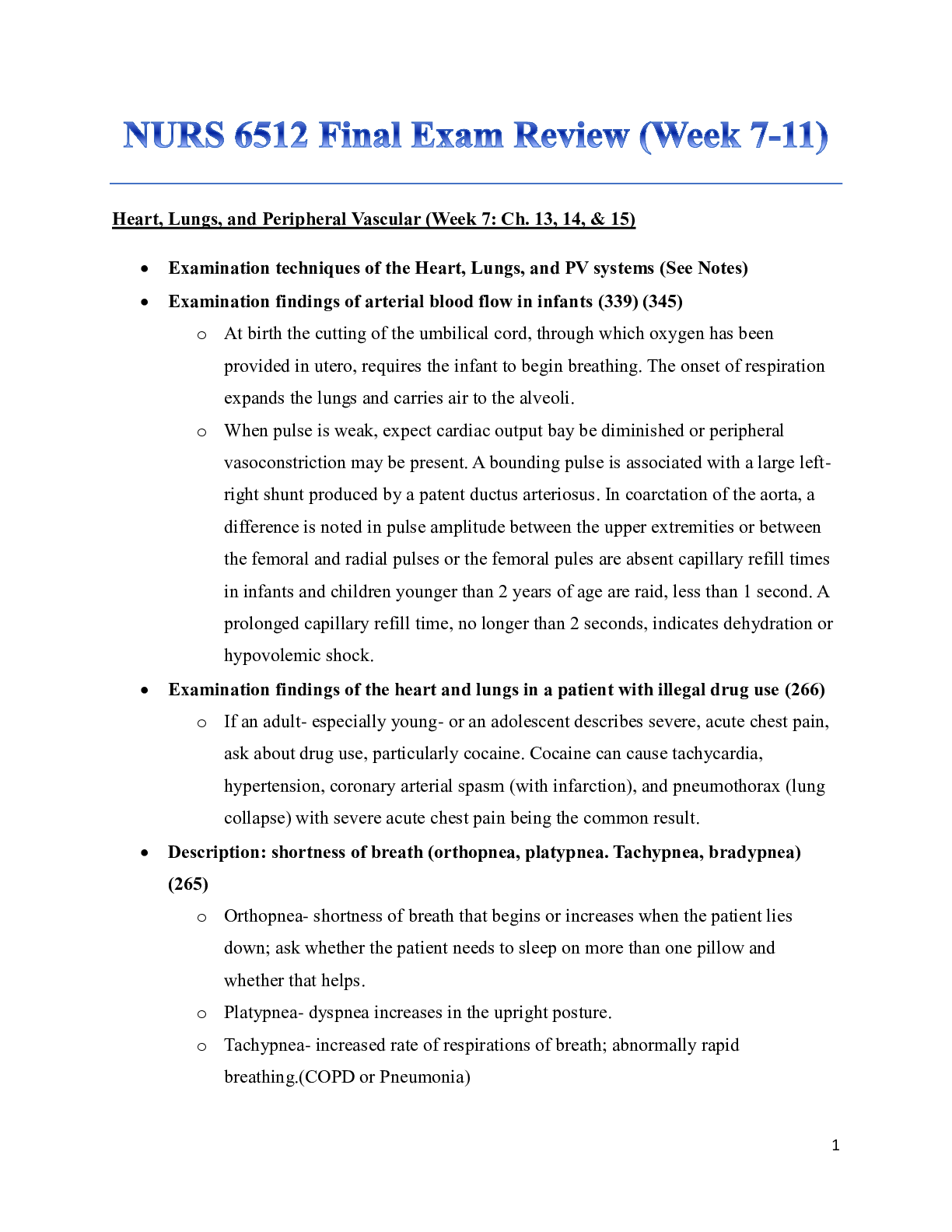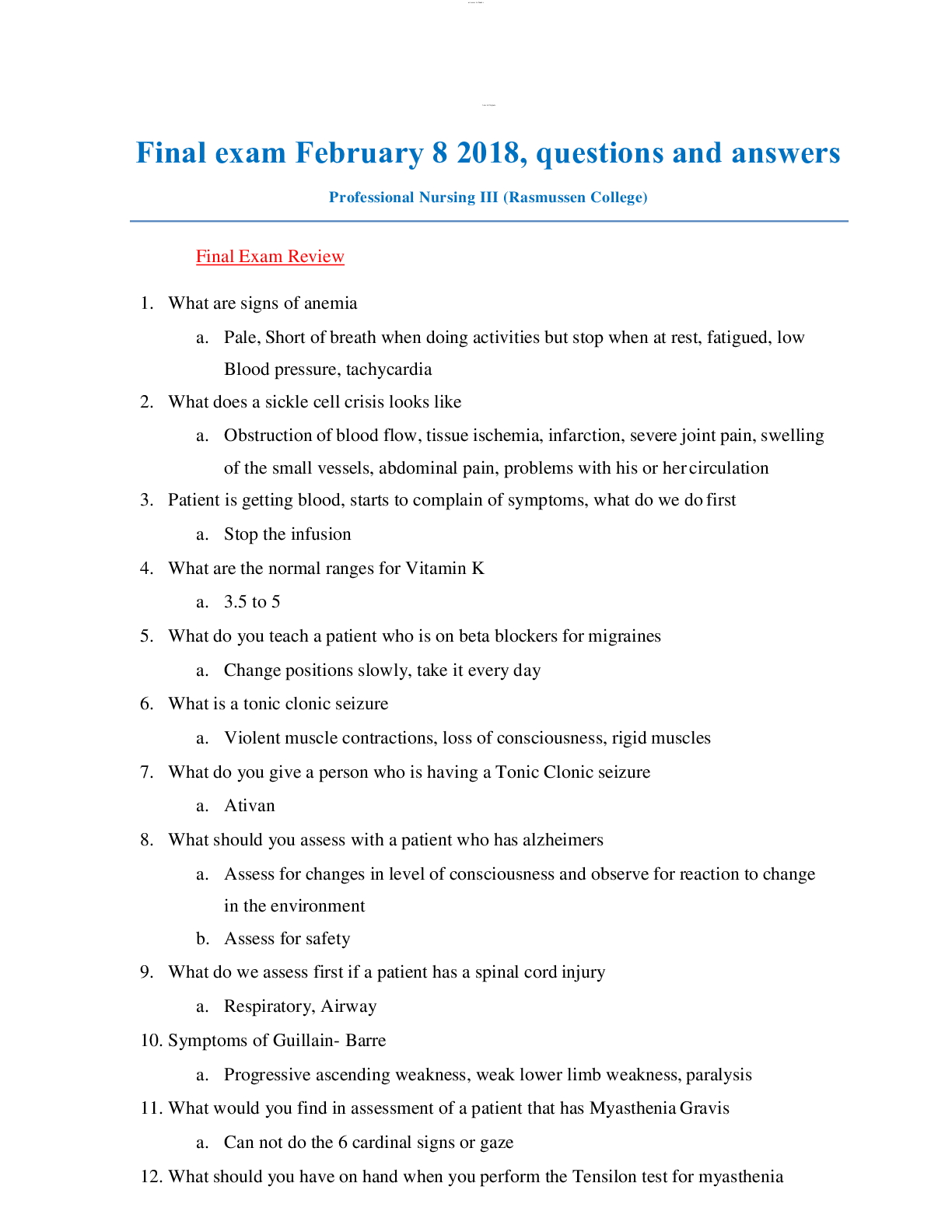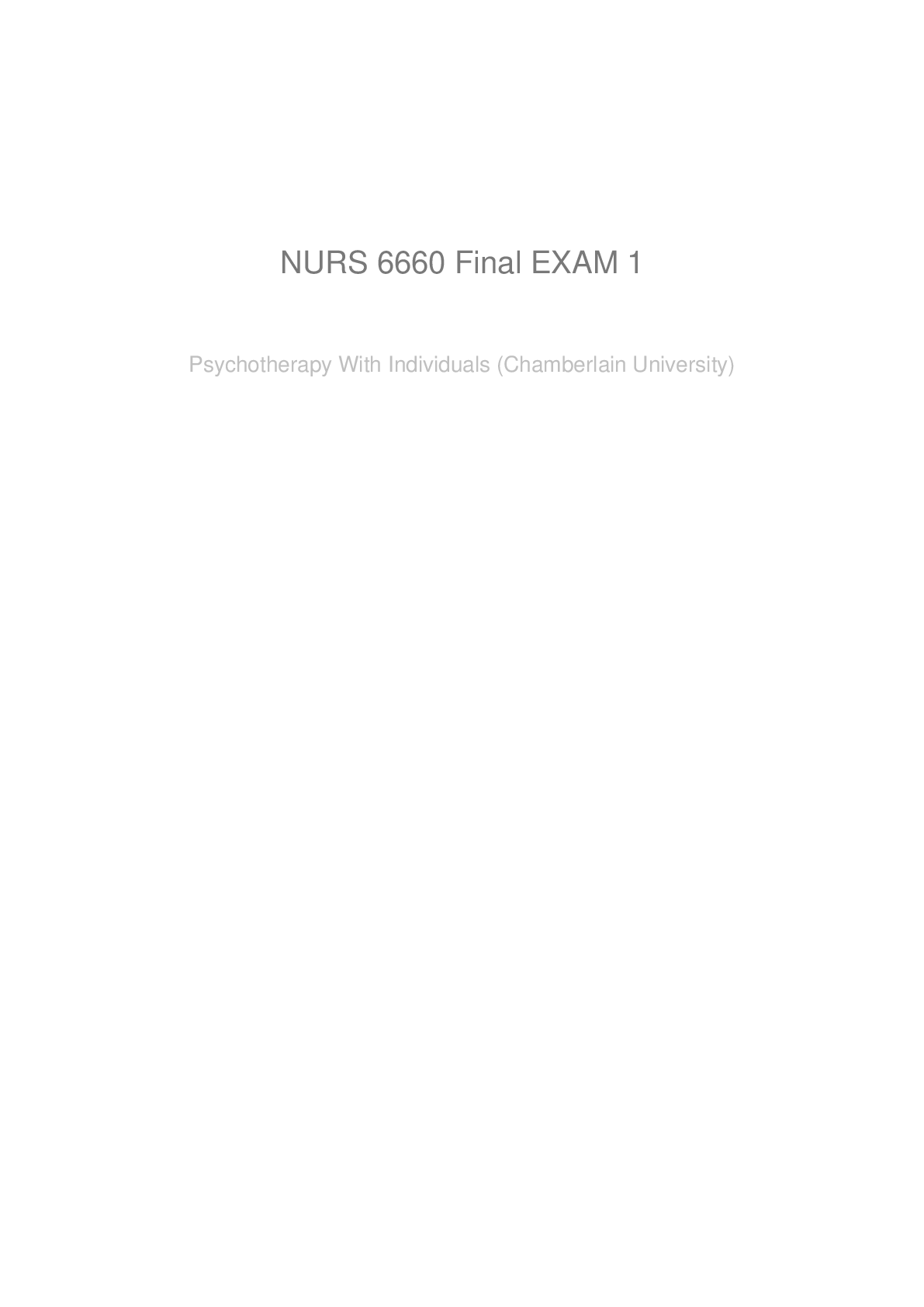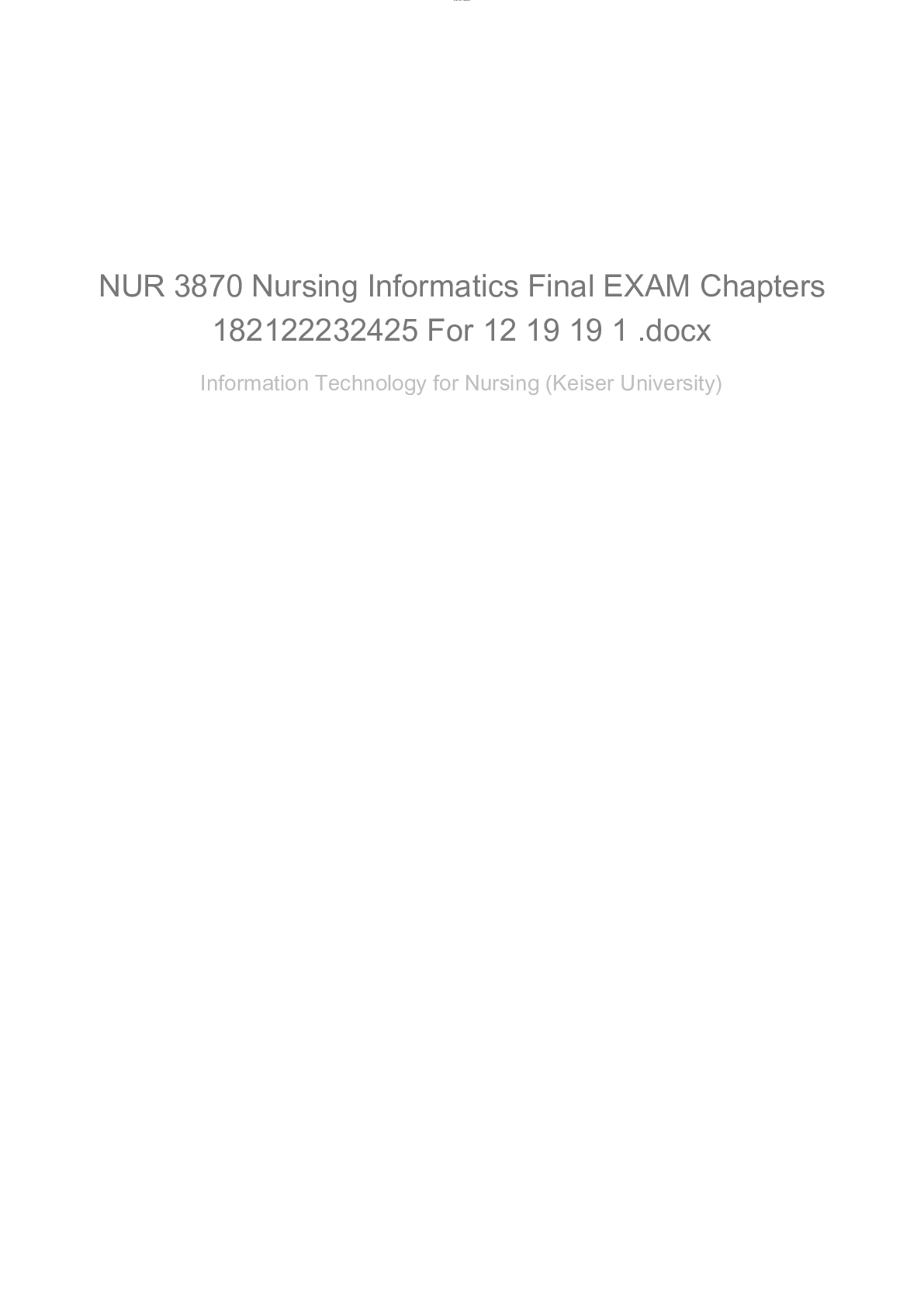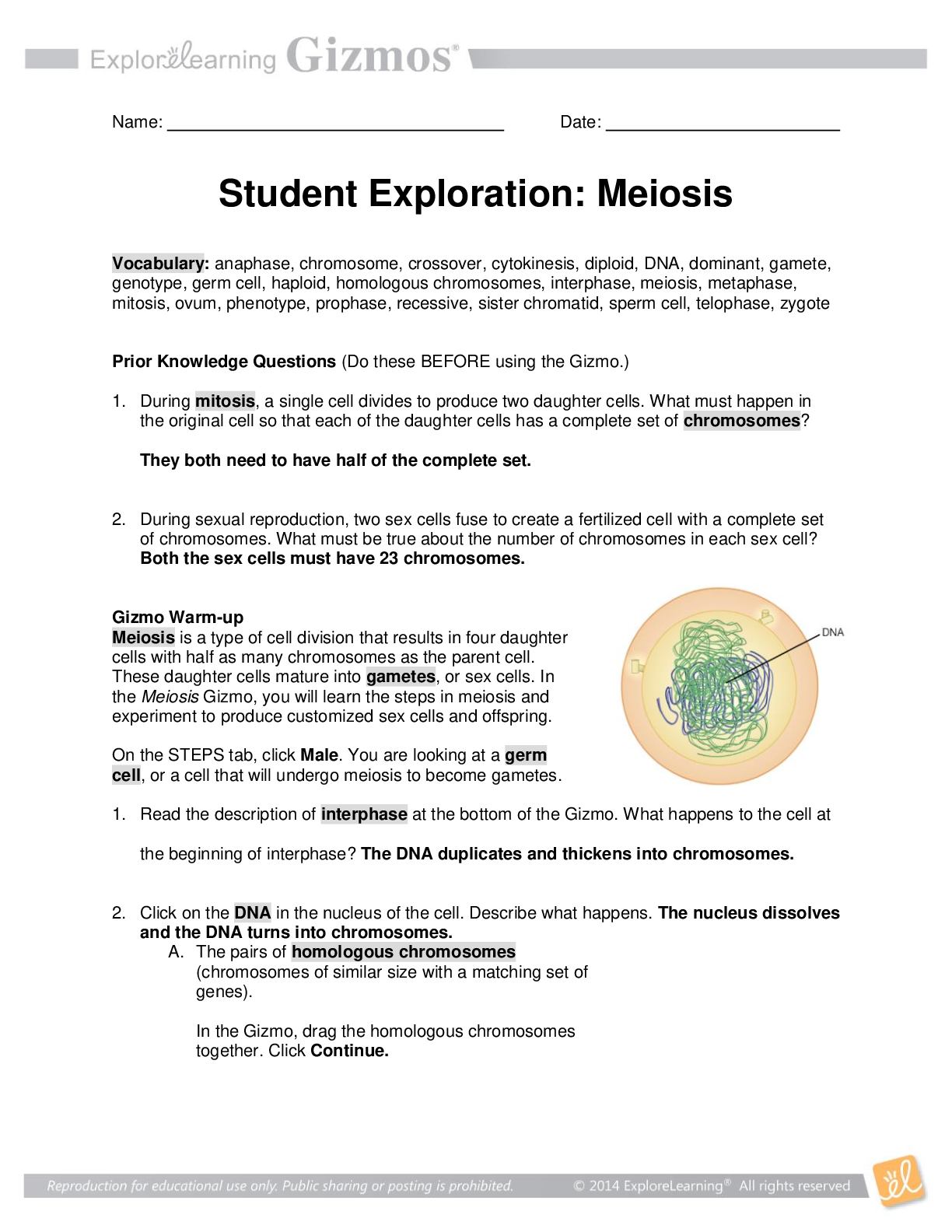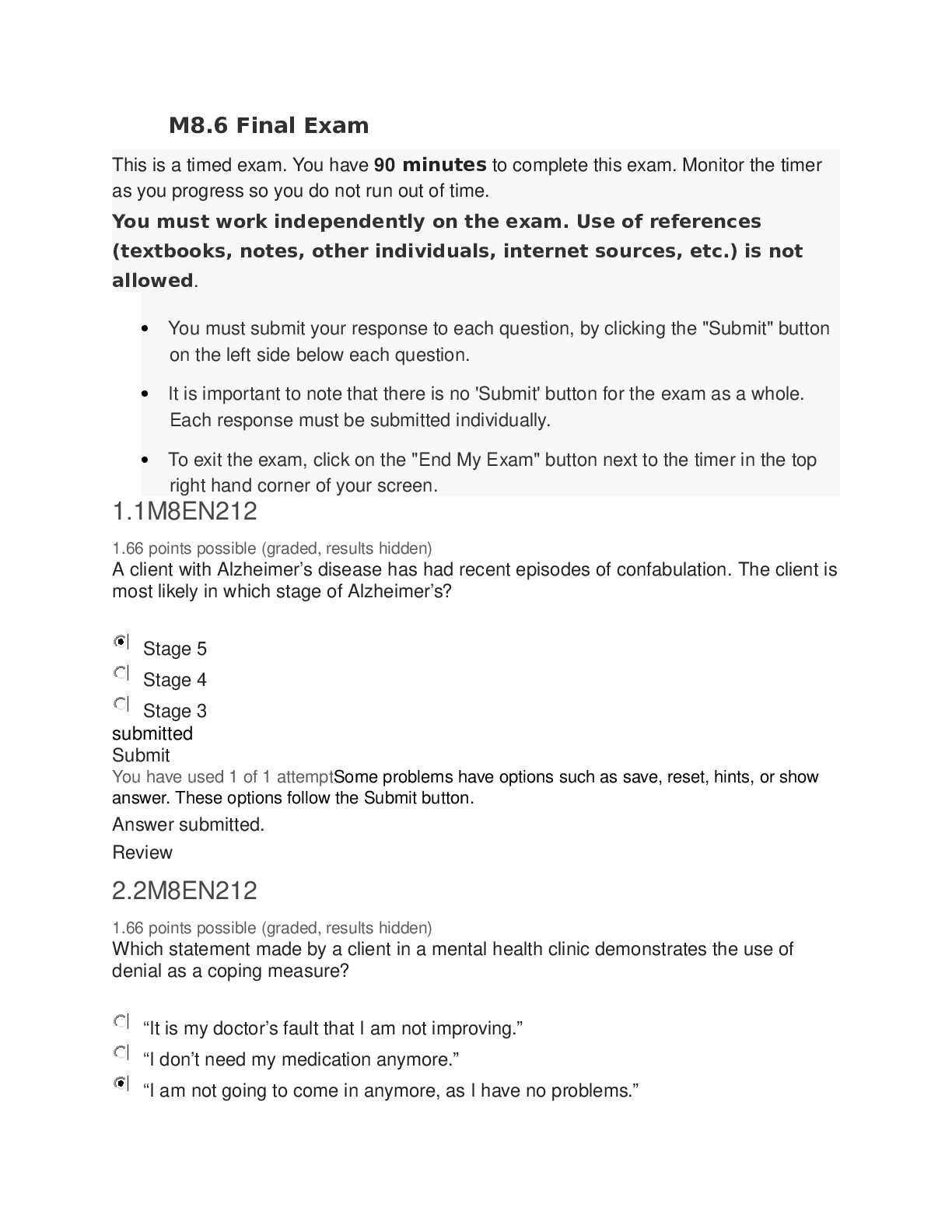*NURSING > Final Exam Review > Final Exam Practice Questions with correct answers *graded A* (All)
Final Exam Practice Questions with correct answers *graded A*
Document Content and Description Below
Final Exam Practice Questions Question 1. Matthew, age 52, is a chef who just severed 2 of his fingers with a meat cutter. You would recommend that he: 1. Wrap the severed fingers tightly in a d... ry towel for transport to the emergency department with him. 2. Leave the severed fingers at the scene because fingers cannot be reattached. 3. Immediately freeze the severed fingers for reattachment in the near future. 4. Wrap the fingers in a clean, damp cloth; seal them in a plastic bag; and place the bag in an ice water bath. Rationales The valgus stress test, varus stress test, Lachman test, and thumb sign are all considered standard tests to check the integrity of the ligaments of the knee. Which test would the nurse practitioner choose to assess the anterior cruciate ligament (ACL), which is the most commonly involved structure in severe knee injury? 1. Valgus stress test. 2. Varus stress test. 3. Lachman test. 4. Thumb sign. Rationales O Lillian, age 70, was told that she has osteoporosis. When she asks you what this is, you respond that osteoporosis: 1. Develops when loss of bone occurs more rapidly than new bone growth. 2. Is a degenerative joint disease characterized by loss of cartilage in certain joints. 3. Is a chronic inflammatory disorder that affects multiple joints. 4. Is a bone disorder that has to do with inadequate mineralization of the bones. Rationales Mike, age 42, a golf pro, has had chronic back pain for many years. His workup reveals that it is not the result of a degenerative disk problem. His back “goes out” about twice per year, and he is out of work for about a week each time. Which of the following should the nurse practitioner advise him to do? 1. Consider changing careers to something less physical. 2. Begin a planned exercise program to strengthen back muscles. 3. Make an appointment with a neurosurgeon for a surgical consultation. 4. Start on a daily low-dose narcotic to take away the pain. Rationales Janine, age 69, has class III rheumatoid arthritis. According to the American Rheumatism Association, which of the following describes her ability to function? 1. Adequate for normal activities despite a handicap of discomfort or limited motion of one or more joints. 2. Largely or wholly incapacitated, bedridden, or confined to a wheelchair, permitting little or no self-care. 3. Completely able to carry out all usual duties without handicap. 4. Adequate to perform only a few or none of the duties of usual occupation or self-care. Rationales Option 1: For an adult patient with a knee injury, the nurse practitioner orders a nonsteroidal anti-inflammatory drug (NSAID) to be taken on a routine basis for the next 2 weeks. Patient teaching should include which of the following? 1. “You may take this medication on an empty stomach as long as you eat within two to three hours of taking it.” 2. “If one pill does not seem to help, you can double the dose for subsequent doses.” 3. “If you notice nausea, vomiting, or black or bloody stools, take the next dose with a glass of milk or a full meal.” 4. “If you have additional pain, an occasional acetaminophen (Tylenol) is permitted in between the usual doses of the NSAID.” Rationales Sean, a factory line worker, has osteoarthritis (OA) of the right hand. According to the American College of Rheumatology (ACR), the guidelines for pharmacologic treatment include: 1. Acetaminophen, tramadol, and intra-articular corticosteroid injections. 2. Oral nonsteroidal anti-inflammatory drugs (NSAIDs), tramadol, and articular corticosteroid injections. 3. Acetaminophen, topical capsaicin, and topical nonsteroidal anti-inflammatory drugs (NSAIDs). 4. Topical capsaicin, topical nonsteroidal anti-inflammatory drugs (NSAIDs), and oral NSAIDs. Rationales Margaret, age 55, presents to you for evaluation of left hand and wrist pain and swelling after a slip and fall on the ice yesterday. On examination, you note tenderness at her “anatomical snuffbox.” You know this probably indicates a(n): 1. Ulnar styloid fracture. 2. Scaphoid fracture. 3. Hamate fracture. 4. Radial head fracture. Rationales Jim, age 22, a stock boy, has an acute episode of low back pain. The nurse practitioner orders a nonsteroidal anti- inflammatory drug (NSAID) and should educate him in which of the following? 1. Maintaining moderate bed rest for 3 to 4 days. 2. Calling the office for narcotic medication if there is no relief with the NSAID after 24 to 48 hours. 3. Beginning lower back strengthening exercises depending on pain tolerance. 4. Wearing a Boston brace at night. ..........................................................................CONTINUED.......................................................................... [Show More]
Last updated: 1 year ago
Preview 1 out of 127 pages
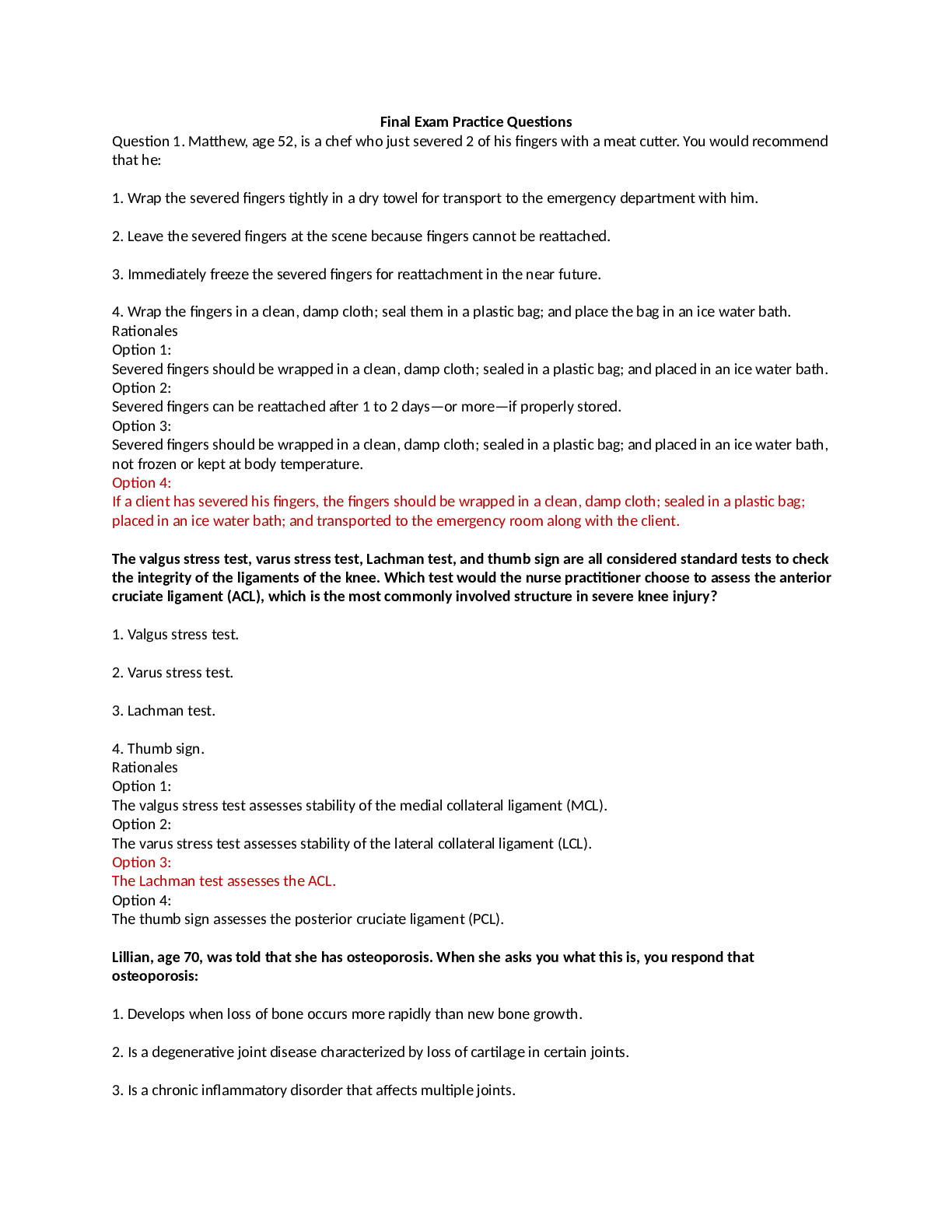
Reviews( 0 )
Document information
Connected school, study & course
About the document
Uploaded On
Jul 26, 2021
Number of pages
127
Written in
Additional information
This document has been written for:
Uploaded
Jul 26, 2021
Downloads
0
Views
53


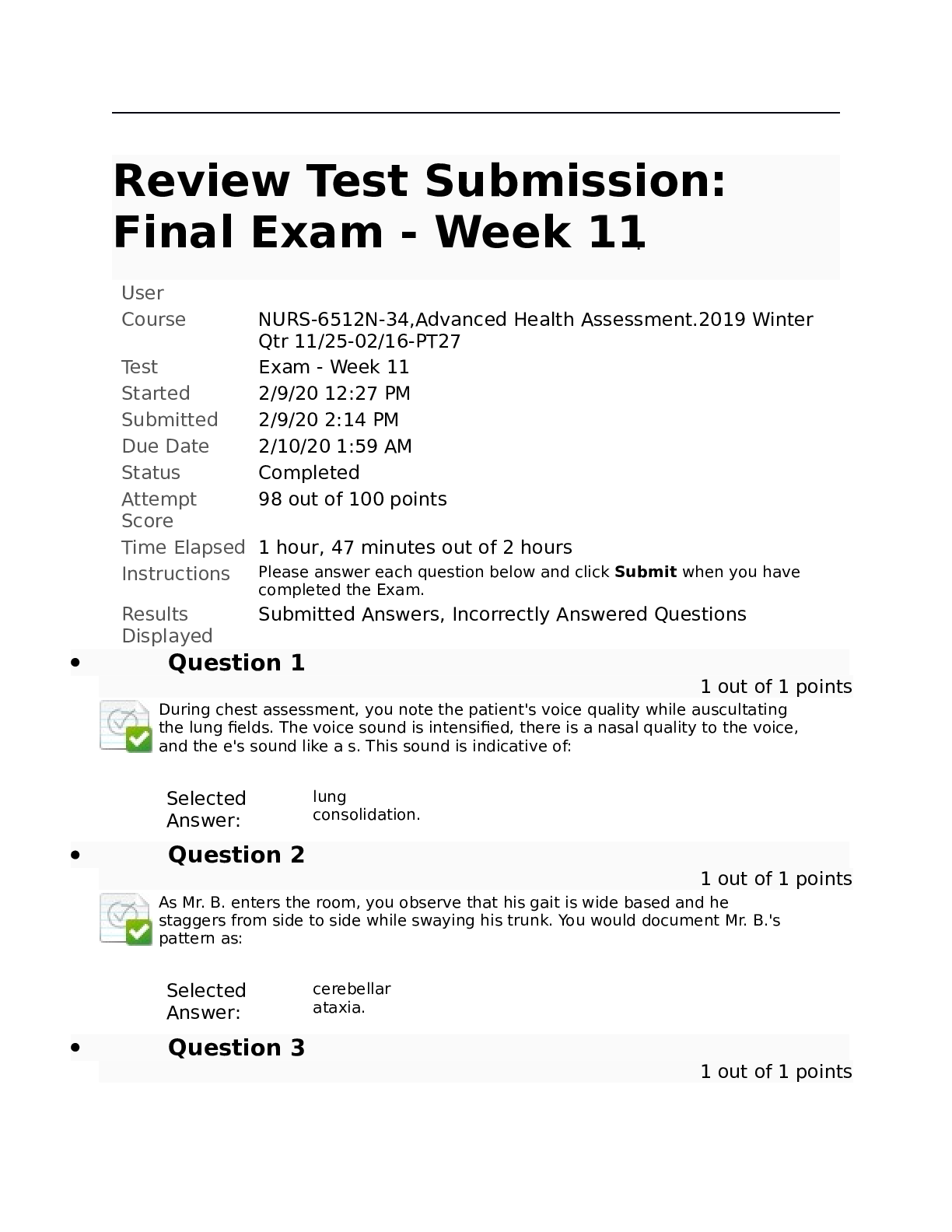
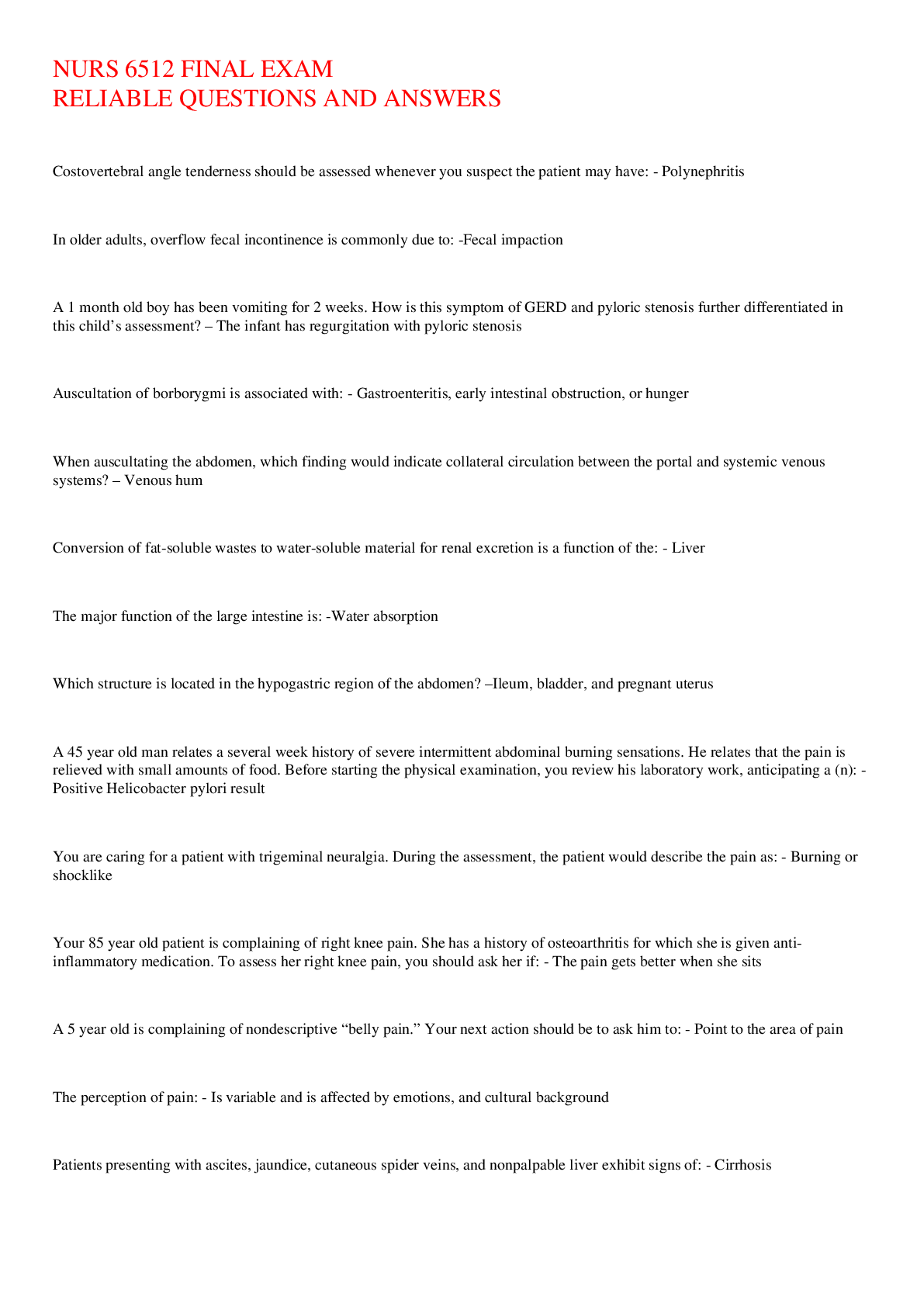
.png)
